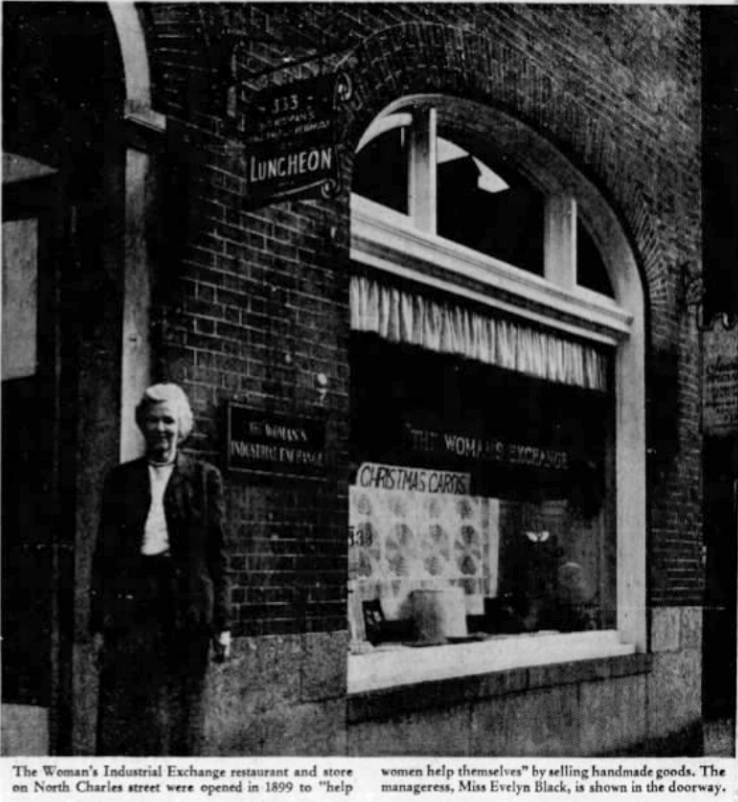1950 – 1960
During the 1940s, a restaurant in the back of the shop was opened for men only downstairs. However, during WWII, female patronage became so large that the bars were lifted and the downstairs dining room was opened up to women as well as men. The Exchange had officially become a lunch staple when in downtown shopping or conducting business, so much so that it had patronage from Western Maryland, Washington D.C., and the Eastern Shore. Baltimoreans would bring their children and grandchildren to dine at the Exchange, creating a cross-generation tradition. After 75 years, the Exchange grew from being run by twelve managers to twenty-one managers in 1954. The managers served without pay, just as they have always done.
Source:
“Sympathy and Practical Aid.” The Baltimore Sun, 27 Jun. 1954.
Managers in 1954:
Headed by Mrs. Herman M. Moser (chairman). Other managers included Mrs. John McFBergland, Mrs. Meredith Boyce, Mrs. Walter Buck, Mrs. Ralph Costa, Mrs. Arthur Fulton, Mrs. Edwin Levering Jr., Mrs. Charles F. McManus Jr., Mrs. Walter L. McManus, Mrs. L.B. Meacham, Mrs. Hugh Allan Meade, Mrs. George W. Murgatroyd, Mrs. L.P. Naylor Jr., Mrs. Leonard F. Olt, Mors. W.A. Pendleton, Mrs. Thomas Schweizer, Mrs. William H. Slasman Jr., Mrs. Charles Stieff, Mrs. John T. Tucker, Mrs. Henry Weil, and Mrs. Richard J. White.
Male advisory board in 1954:
E. Asbury Davis, Judge Herman M. Moser, and George G. Shriver.
Source:
“Sympathy and Practical Aid.” The Baltimore Sun, 27 Jun. 1954.
The items sold in the consignment shop in 1959 were made by 175 women and three men living throughout Maryland and in New York, New Jersey, North Carolina, Iowa, Arizona, and Colorado. The male consignors’ specialty was doll furniture such as chairs, cradles, and beds. The Exchange has a 36 person staff, which includes three cooks, as well as the board of managers and three-man advisory board. The consignors and board of managers meet each other at an annual tea every April in the Exchange building. Each consignor introduces themselves and what they make to sell at the Exchange. However, the 1959 managers did note that the lunchroom is what keeps the Exchange going since the consignment shop only makes a profit in December.
Source:
“Charles Street Landmark.” The Baltimore Sun, 29 Nov. 1959.

The lunchroom of the Woman’s Exchange has altered very little since it was opened, as those Baltimoreans who are its customers object to even minor changes. The food served is old-American and chiefly old Maryland.
Source of photos:
“Charles Street Landmark.” The Baltimore Sun, 29 Nov. 1959.

The Woman’s Industrial Exchange restaurant and store on North Charles Street were opened in 1889 to “help women help themselves” by selling handmade goods. The manageress, Miss Evelyn Black, is shown in the doorway.

